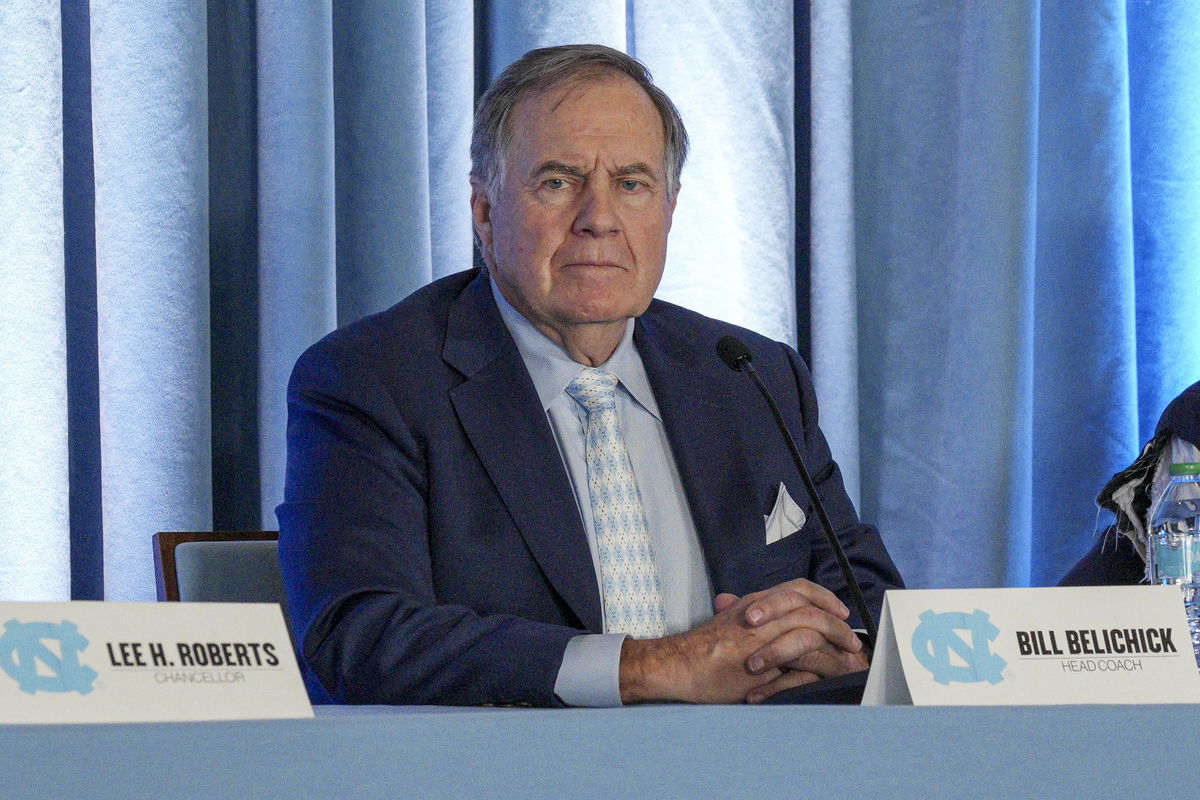
Imago
NCAA, College League, USA Football: North Carolina-Bill Belichick press conference, PK, Pressekonferenz Dec 12, 2024 Chapel Hill, NC, USA North Carolina Tar Heels new head coach Bill Belichick speaks to the media at Loudermilk Center for Excellence. Chapel Hill Loudermilk Center for Excellence NC USA, EDITORIAL USE ONLY PUBLICATIONxINxGERxSUIxAUTxONLY Copyright: xJimxDedmonx 20241212_jla_db2_109

Imago
NCAA, College League, USA Football: North Carolina-Bill Belichick press conference, PK, Pressekonferenz Dec 12, 2024 Chapel Hill, NC, USA North Carolina Tar Heels new head coach Bill Belichick speaks to the media at Loudermilk Center for Excellence. Chapel Hill Loudermilk Center for Excellence NC USA, EDITORIAL USE ONLY PUBLICATIONxINxGERxSUIxAUTxONLY Copyright: xJimxDedmonx 20241212_jla_db2_109
Any discussion around the future of college football is taken while considering the two wishes of the Big 2: B1G and SEC. The conferences that draw the most eyeballs. It may say ‘Power 4,’ but the other two conferences will look like they are lagging behind. For the ACC, the regression is more pronounced. Sure, Clemson is still considered a ‘power’ program, and FSU is still being touted to go big despite their 2-win season in 2024. But is ACC truly what it was 10 years ago?
Watch What’s Trending Now!
The same Clemson program that won two national titles under Dabo Swinney has struggled with adapting to the NIL era change. For instance, in the 2021 and 2022 seasons, they lost 14 key players, including DJ Uiagalelei, and have shown a significant decline in their recruiting. Take, for example, their 2021 class, which was 5th nationally, and their 2020 class, which was 3rd nationally, but now? In 2024, they were ranked 14th nationally and are 23rd nationally in their 2025 class. And so, as Clemson declined the ACC, too, regressed, and other programs also failed to keep up.
Just take ACC’s television revenue, which is around $44.8 million per school. In contrast, Big 10 schools earn a whopping $81.3 million, and SEC schools earn $74 million every year. Then there were other significant issues, too, which ranged from Clemson’s $140 million lawsuit to leave the ACC. Also, there was the addition of Cal, Stanford, and SMU, which many touted to create a geographically disparate footprint spanning from California to Massachusetts. What was more perplexing was that the move, which was initially intended to bring in revenue, has failed to bridge that financial gap. Urban Meyer highlighted some of the similar issues with the ACC.
ADVERTISEMENT
“Here’s the issue I have with the ACC. There used to be arguments that it was one of the top conferences. They’ve been down. There was a day when you had Florida State, Louisville, Virginia Tech, NC State, and Miami- think about how these were all top 10 programs at one point. They’re not right now, they’re not, and so I just don’t know enough about that conference,” Urban Meyer replied to Mike Ingram when asked to predict about ACC programs’ fate in 2025 on ‘The Triple Option’s’ June 25th podcast. And guess what, it’s as deep a problem as even the GOAT of football, Bill Belichick, can’t fix.
There’s one simple rule as to how college football works now. You win games, you bring in titles, you defeat major teams, and then you do that year in and year out. And guess what? If enough teams start to do that? You will have a conference that might even surpass the SEC!! The revenue deals will flow in, the major broadcasters will give a contract on your terms, and most of all? The recruits will rejoice at the prospect of joining the conference. That’s exactly what the Big 10 did with their recent success. But with ACC, the problem runs deeper.

Imago
Credit: Imago
When Bill Belichick arrived at UNC, there were prominent talks about how the move would benefit the ACC, as the offseason was the “buzziest” in recent years. And while Belichick’s 8 Super Bowl rings make him the best in the business to revive the ACC, the system is designed in such a way that it’s difficult to do that. Why? With the House v. NCAA settlement coming in, every program can give $20 million to its players. So, more revenue would mean more diversification of the financial portfolio, and that would mean bigger opportunities for the players. But so far, we haven’t seen that happening with ACC programs.
ADVERTISEMENT
ADVERTISEMENT
Reviving the ACC, a lost cause?
Tennessee’s acquisition of Nico Iamaleava was possible because of their Spyre Sports Collective, which funded $8.1 million to land him. On the other hand, programs like Clemson and FSU, which were also after him, still were relying on boosters without centralized collectives, and hence, Josh Heupel outsmarted them. Even Syracuse.com’s Mike Waters highlighted the disparity between ACC and SEC programs.
“Right now, it’s not about name, image, and likeness. It’s basically pay for play. You can give Alabama and Syracuse $20 million each, but Alabama’s still going to have those collectives that bring in more money,” said Mike Waters. So, where does the ACC turn to revive the conference? Or is it a lost cause now?
There are various suggestions that may help. This includes setting up a centralized conference-wide NIL collective to ensure compliance, just like how the Big 10 did with its Opendorse model. This would pool in money for smaller schools to support them and give them opportunities that they might not usually get. Other suggestions include maximizing non-TV revenue through other events like concerts, etc., and branding events, and investing in facilities to attract recruits. All these suggestions might help, but ACC still needs a comprehensive overhaul, and it won’t be easy!
ADVERTISEMENT
ADVERTISEMENT
ADVERTISEMENT
ADVERTISEMENT

